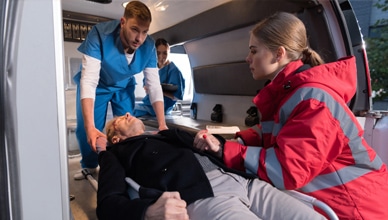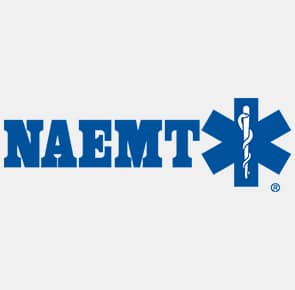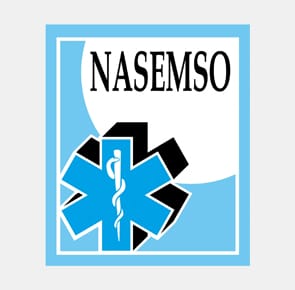Get Matched With Health Services Programs
Are you considering a career as a paramedic? If you are interested in providing emergency healthcare services to patients outside of a hospital setting, you may be well-suited for this profession. Paramedics care for the sick and injured in emergency medical settings, often saving lives with quick reaction and competent care. In most cases, these professionals respond to emergency calls, perform life-saving services, and transport patients to nearby medical facilities. Additionally, they often must report their observations and treatments to accepting physicians, document medical care, and inventory equipment. It's not uncommon for paramedics to work closely with police and firefighters at the scene of an incident.
Those looking to enter a paramedicine program or paramedic program can choose from an associate degree, such as an Associate of Applied Science in Paramedic Science - an 18-month program ending with EMT certification and an associate degree, or a Bachelor of Science degree program, which may have greater prerequisite requirements but finishes by rewarding you with a bachelor's degree in emergency medical care. EMT-paramedic programs must be accredited by the Committee on Accreditation of Educational Programs the Emergency Medical Services Professions (CoAEMSP). You can only find nationally recognized EMS education accreditation from the Commission on Accreditation of Allied Health Education Programs (CAAHEP). These paramedic programs will provide learning in the following areas of EMS education and will require successful completion before providing access to paramedic licensure.
- Patient Assessments and Patient Assessment Skills
- Advanced Emergency Medical Care
- Paramedic Science
- Basic Life Support & Advanced Life Support
- EMT-basic certification
- Anatomy & Physiology
- Other Emergency Medical Services
- Pre-Hospital Training
- Clinical Training and Clinical Rotations
- Hours of Training in Field Practicums
- And More

Components of a Successful Paramedic Career
A career as an EMT paramedic or advanced emergency medical technician is extremely demanding and lives often depend on their training, skill, and judgement. These professionals must excel in fast-paced and sometimes unpredictable settings, which is why they require EMT-basic certification and paramedic licensure. They also have one of the highest rates of injuries and illnesses of all occupations; they may be frequently exposed to contagious diseases and viruses, as well as involved with potentially combative patients. Additionally, paramedics and emergency medical technicians spend considerable time kneeling, bending, and lifting while performing their job and providing patients with pre-hospital treatment.
As a result, not everyone is capable of being successful in this profession. Most professionals in this field possess the following traits:
- Compassion for others and the ability to provide emotional support to patients in emergency situations - some of this can be learned in your EMS education and some of it can't
- Listening skills that help to determine the extent of patient injuries and/or illness
- Interpersonal skills that allow for productive interactions with teammates and easier coordination of activities during stressful scenarios
- Physical strength and stamina enough to withstand long periods of bending, lifting, and kneeling
- Problem-solving skills that facilitate the evaluation of patient symptoms and the quick administration of appropriate treatments
- Speaking skills that help with clearly explaining procedures to patients, giving orders, and relaying information to other medical professionals
- A paramedic, EMT, or advanced emergency medical technician must also absorb and be able to use the knowledge they learn from their EMS education and courses such as anatomy & physiology, paramedic science, and hours of training in field practicums and clinical rotations
Compare Popular Online Health Services Programs
Overview of Paramedic Certifications and Training Options
Specific requirements to become a paramedic vary by state. You can, however, keep the following general steps in mind as pursue a career in this field:
- Develop your interest in the medical profession
- Take courses in anatomy and physiology
- Consider becoming certified in CPR
- Earn a high school diploma
- Research education options
- Become EMT certified
- Enroll in an education or training program
- Complete necessary coursework
- Research state licensure requirements
- Apply for licensure
- Find employment
What Does a Paramedic Do?

Find Your Online Health Services Program
It is important to note that much of a paramedics work is done while transporting patients in an ambulance. They are responsible for getting those in their care to nearby hospitals or other healthcare facilities. Paramedics also report their initial observations and treatments to physicians and nurses, as well as document the medical care provided and maintain their supplies and equipment.
What Is the Difference between a Paramedic and an EMT?
Paramedics and EMTs often work closely with one another to provide emergency healthcare services, but these two positions are quite different. There are several major differences you should be aware of. Paramedics, for example, usually complete 1,200 to 1,800 hours of coursework, whereas EMTs complete only 120 to 150.
EMTs learn many basic skills, including CPR, providing oxygen, administering glucose for diabetics, and addressing allergic reactions. They are not, however, permitted to provide treatment that requires needles or cutting. Because paramedics have significantly more training, these professionals can do everything an EMT does as well as administering medications, starting intravenous lines, providing advanced airway management, and resuscitation.
As a result of these differences, paramedics tend to make more money than EMTs do.
Typical Paramedic Trade School Requirements
If you plan to become a paramedic, you must first enroll in a community college or traditional university program. It is important to become aware of the admission requirements these institutions usually have early so you can make the appropriate preparations. While every school is different, most share similar expectations for incoming students. In most cases, you will need:
- High School Diploma or GED
- Standardized Test Scores (either SAT or ACT)
- EMT Certification
- Six Months Professional EMT Experience (program dependent)
Typical Paramedic Certifications Needed
Paramedics are legally required to become certified before they can practice. Every state requires both EMT and paramedic professionals to pass a state or national licensing examination. Most also necessitate a background check. It is important to realize, however, that regulations vary per state. You will need to become familiar with your particular location’s certification process before moving forward.In most cases, paramedics are required to be certified as an EMT before they can become a paramedic. Some states have their own certification process, but most expect professionals to go through the National Registry of Emergency Medical Technicians (NREMT). The NREMT offers national EMT certification to individuals who:
- Are 18 years of age or older
- Successfully complete a state-approved EMT course that meets National Emergency Medical Services Education Standards
- Have a current CPR-BLS for ‘Healthcare Provider’ or equivalent credential
- Successfully complete the NREMT cognitive and psychomotor exams
While some states have first-level certifications that do not require national certification, most paramedics also become certified through the NREMT. The majority of states provide licensure to individuals who have their National Paramedic Certification (NRP), as long as they have no history of criminal behavior. Individuals intending to apply for NRP must meet the following requirements:
- 18 years of age or older
- Current National EMT Certification or state EMT license
- Degree from a paramedic program accredited by the Commission of Accreditation of Allied Health Education Programs (CAAHEP)
- Psychomotor competency portfolio
- Current CPR-BLS for ‘Healthcare Provider’ or equivalent credential
- Pass the NREMT cognitive and psychomotor exams
Academic Standards for an online Paramedic Degree or Certification
If you plan to enroll in a paramedic certificate or online degree program, you will have to meet the academic standards set by the institution. All colleges and universities have strict guidelines they expect students to adhere to. While these vary, most schools establish standards pertaining to grade point averages (GPA), cheating, and plagiarism.
As a student, you will be expected to maintain a certain GPA. If your GPA falls below the predetermined minimum, you could be placed on academic probation or, if unaddressed, suspended. Additionally, if you are found to be cheating or plagiarize another person’s work, you could be placed on academic probation, suspended, or even permanently dismissed from the institution.
Exam and Experience Needed for a Paramedic Degree or Certification
While some locations require state-specific examinations for certification, most paramedic professionals will need to take both the EMT and NRP cognitive examinations administered by the NREMT. The cognitive exam for EMT certification consists of 70 to 120 questions on EMS care that must be completed within two hours. The cognitive exam for NRP certification consists of 80 to 150 questions on EMS care that must be completed within two and a half hours. Both are computer adaptive tests.
Find Online Health Services Schools
Additionally, EMT candidates must successfully complete a state-approved psychomotor examination. Most institutions will provide format and logistical information about this exam, as it is not offered by NREMT.
NRP candidates must also take the psychomotor exam administered by the NREMT. This test is designed to evaluate six areas of skill:
- Patient Assessment – Trauma
- Dynamic Cardiology
- Static Cardiology
- Oral Station – Scenario A
- Oral Station – Scenario B
- Integrated Out-of-Hospital Scenario
Paramedic Degree & Certification Options
Education requirements for individuals interested in becoming a paramedic are quite rigorous. Because they must first be certified as an EMT, many professionals begin by enrolling in an EMT diploma or certificate program. These are shorter and generally provide a basic introduction to the field. Aspiring paramedics must then earn an online associate or bachelor degree in order to qualify for further certification.
As you consider your educational options, it is important to keep the potential cost in mind. The following average tuition rates are courtesy of the College Board:
| Degree Type | Public (In-State) | Private |
|---|---|---|
| Associate | $3,570 | - |
| Undergraduate | $9,970 | $34,740 |
| Graduate | $8,670 | $29,960 |
Diploma or Certificate
Before pursuing a career as a paramedic, candidates will need to become certified as an EMT. EMT diploma and certificate programs equip students with the basic skills necessary to provide emergency medical care to patients being transported to nearby facilities. Graduates will also have the knowledge needed to pass the licensing examination in their state. These take significantly less time than earning a degree because they do not require any traditional liberal arts classes. Coursework usually takes one to two years to complete, but some online programs can be finished in as few as six months.
Course requirements vary, but commonly include:
- Fundamentals of Emergency Medical Technology
- Introduction to the EMT Profession
- EMT Assessment
- Airway Management
Online Associate Degree
After becoming certified as an EMT, aspiring paramedics will need to earn an advanced degree. One option is enrolling in an associate degree program. These consist of approximately 60 credit hours of coursework that is more comprehensive and advanced. Classwork usually builds on previous EMT training but dives deeper into the content. Graduates can usually complete the necessary requirements in two years and will be qualified to apply for certification as a paramedic.
Course requirements vary, but commonly include:
- Trauma Management
- Special Populations
- Emergency Pharmacology
- Cardiology
Online Undergraduate Degree
While paramedics are not required to earn an undergraduate degree, some professionals prefer to enroll in one of these four-year degree programs. These individuals tend to have an interested in healthcare administration and plan to apply for work a paramedic training managers or clinical supervisors. Coursework generally consists of 120 credit hours and can be completed in four years.
Course requirements vary, but commonly include:
- Administration Systems
- Medical Law and Ethics
- Patient and Situation Assessment
- Pharmacology
Fields of Study
Some online programs offer paramedic students an opportunity to specialize.
The most common career specializations include:
- Emergency Medical Technician Paramedic
- Flight Paramedic
- Firefighter Paramedic
- Search and Rescue (SAR) Medic
- Ski Patrol Medic
- EMS Instructor
- Emergency Medical Technician Paramedic
A specialization as an emergency medical technician prepares professionals to respond to various emergencies, from a single individual having a heart attack to multi-person accidents on the roadway. Paramedics with this type of training provide first-line medical or emergency care for people who are sick or have been injured. These paramedics usually operate in teams and provide life-saving healthcare services as their patients are being transported to a hospital for more extensive care. These professionals learn many skills, including how to perform CPR, give oxygen, administer medication, start intravenous lines, provide advanced airway management, resuscitate patients, and help people who have suffered from trauma. - Flight Paramedic
A specialization as a flight paramedic is ideal for professionals who are comfortable working with patients being transported via aircraft to a healthcare facility. They often take part in aero-medical emergencies, medical transports, and evacuations. Flight paramedics must be able to work in extremely stressful environments, providing emergency medical care to people who have been severely injured, are suffering from an illness, or have experienced trauma. It is important to note that there are far fewer flight paramedics than there are emergency medical technician paramedics. While salaries can vary greatly depending on location, many professionals with this specialization receive higher pay. - Firefighter Paramedic
A specialization as a firefighter paramedic bridges the gap between firefighter and paramedic. These professionals must have skills in both fields and are instrumental in increasing the survival rates and efficiency of fire departments. In most cases, firefighter paramedics are the first individuals to arrive on scene. They regularly respond to fires, traffic accidents, and other emergencies. These professionals are not only responsible for putting out fires, but also responding appropriately to the medical needs of those who have been injured. Firefighter paramedics are trained to rescue trapped individuals, treat wounds, work with other rescue teams, and conduct search and rescues.
Potential Careers and Salaries for Paramedic Graduates
According to the Bureau of Labor and Statistics, the median annual wage for EMTs and paramedics in 2021 was $33,380. This is just below the median annual wage of $40,300 reported for all occupations. PayScale, however, reports an average salary of $49,602 for paramedics. The job outlook for those interested in the field is also very good. The employment for both EMTs and paramedics is expected to grow 15% between the years 2016 and 2026. This is much faster than the average for all other occupations.
Search Programs Offering Health Services Majors
It is important to note that level of education has a large impact on the wages earned. The median wage provided by the Bureau of Labor Statistics was likely lower because it includes both EMTs and paramedics. Because paramedics require more education and additional certification, these professionals tend to make more money.
Paramedic Median Salaries by Occupation
Becoming a certified paramedic assures potential employers that you have the skills necessary to excel in a variety of medical-related fields. While job titles and pay can vary drastically based on your location, some of the most popular jobs include:
| Occupation | Entry-Level Median Annual Salary | Mid-Career Median Annual Salary | Late-Career Median Annual Salary |
|---|---|---|---|
| EMT | $30,200 | $37,900 | $55,028 |
| Paramedic | $39,800 | $48,800 | $60,600 |
| Flight Paramedic | $50,000 | $55,900 | $58,900 |
| Firefighter Paramedic | $51,400 | $50,600 | $72,600 |
| EMS Instructor | $35,800 | - | - |
| Registered Nurse | $57,400 | $63,600 | $70,500 |
Important Questions to Ask (FAQ)
How long does it take to earn an online paramedic degree or certificate?
While online programs can differ, EMT basic training generally takes between six months and two years. Many professionals pursuing a career as a paramedic will also complete advanced EMT training, which usually consists of 300 additional hours of coursework. After becoming EMT certified, paramedic candidates will need to complete a two-year degree at a community college or technical school. Alternatively, those interested in an advanced paramedic career may elect to enroll in a four-year undergraduate degree program.
How much does an online paramedic degree cost?
The cost of your education will depend on the level of education you complete. Location, school type, and your residency status will also impact the amount you can expect to pay. According to data provided by the College Board’s Trends in Higher Education Series, the average in-state, public institution tuition for the 2017 and 2018 academic year was $9,970. Public two-year colleges had an average cost of $3,570 for the same academic year. Generally, you can expect certificate programs to cost less than both an associate or undergraduate degree.
How many students graduate “on time,” or within 12 to 24 months?
Program durations also vary significantly based on the institution type and location. Most colleges and universities disclose graduation timeframes on their websites, however. Take time to research and confirm the anticipated timeline of the institutions you are interested in before enrolling. It is also a good idea to find out what the overall graduation rate is for your program of interest.
What kind of accreditation does the online program hold? How it is regarded in the field?
As you look for an EMT and/or paramedic degree program, it is important to consider its accreditation status. All colleges and universities have the ability to become accredited, a process that proves their adherence to certain field standards. Attending an unaccredited institution can make transferring credits more difficult. It may also be harder to find employment.
Colleges and universities can be regionally or nationally accredited. The most prominent agency is the Commission on Accreditation of Allied Health Education Programs (CAAHEP). It is the largest programmatic accreditor of the health sciences professions in the nation. Opting for a regional organization may be sufficient, but will limit your ability to find work in other areas.
While accreditation is not mandatory, you will be unable to qualify for EMT or NRP certification through the NREMT unless you have successfully completed a program accredited by the CAAHEP.
Paramedic Scholarships
Paying for an EMT certificate, associate, or undergraduate program can be expensive. Fortunately, students can apply for field-specific scholarships. While loans must be paid back over time, scholarships are essentially free aid that can be used to pay for tuition, fees, room, board, and educational materials.
There are numerous scholarships available for EMT and paramedic students, but some of the best options include:
-
Legacy Scholarship
Amount: $500-$2,000
Deadline: Varies
The Legacy Scholarship is funded by Bound Tree. Each year, Bound Tree provides multiple merit-based financial awards of $500 to $2,000 to individuals interested in a career in emergency medical services. Applicants must be a son or daughter of an EMT, paramedic, or firefighter. The recipients are selected based on an essay explaining why they wish to pursue an EMT career and two letters of recommendation.
-
Michael J. Latta EMS Scholarship
Amount: April 15
Deadline: Varies
The Michael J. Latta EMS Scholarship is funded by the Michael J. Latta EMS Foundation. Each year, the foundation provides financial aid to individuals who wish to attend school to become paramedics. Applicants must have a current EMT license and should emulate Michael’s character traits, worth ethic, dedication, energy, and enthusiasm.
-
National Association of Emergency Medical Technicians (NAEMT) Scholarships
Amount: $1,000
Deadline: Varies
The National Association of Emergency Medical Technicians (NAEMT) scholarships are funded by the NAEMT Foundation. Each year, the NAEMT Foundation provides multiple financial aid awards of up to $1,000. Scholarships are available to individuals wishing to enter the emergency medical services field. The recipients are selected based on commitment to entering the profession, dedication to the community, and financial need.
Professional Paramedic Organizations
Current EMTs and paramedics, as well as students studying to enter the emergency medical services field can join professional organizations and associations. Deciding to become a member of a professional group like this has many benefits. While every organization is different, most offer access to valuable resources, discounts, training, certifications, and networking opportunities. Some of the most prominent professional organizations, associations, and societies for EMTs and paramedics include:
- NAEMT
- NASEMSO
- AAA

NAEMT
National Association of Emergency Medical Technicians
The National Association of Emergency Medical Technicians (NAEMT) is the only national association that seeks to serve the interests of all emergency medical service professionals. It strives to provide access to education and career advancement opportunities, as well as money-saving benefits. Members receive scholarship eligibility, exclusive discounts, free newsletters, insurance coverage, and committee voting rights.

NASEMSO
National Association of State EMS Officials
The National Association of State EMS Officials (NASEMSO) is dedicated to promoting the orderly development of coordinated emergency medical service systems across the nation. It achieves this by supporting professionals in the development of policy and oversight, as well as providing valuable resources. Members receive access to professional publications, medical data, and an emergency medical service leadership skills workshop.

AAA
American Ambulance Association
The American Ambulance Association (AAA) strives to promote healthcare policies that embody excellence in the ambulance services industry. The association also seeks to provide relevant research, education, and communication programs to professionals in the field. Members gain unlimited access to a Ceridian Lifeworks Employee Assistance Program, free Critical Incident Stress Management, publications, and bulk buying discounts.
Choosing an Accredited Paramedic School
When selecting an EMT certificate or paramedic degree program, do not forget to research the institution’s accreditation status. As previously mentioned, enrolling in an unaccredited program can result in difficulty transferring credits and/or finding employment. It can also negatively impact your annual salary and prevent you from qualifying for certification.
On-Campus vs. Online vs. Hybrid Degree Programs
While most EMT and paramedic students enroll in traditional, on-campus education programs, daytime course schedules are not convenient for everyone. If your current job prevents you from attending classes on campus full time, a hybrid degree may be a good alternative. The medical field requires hands-on learning, so exclusively online programs do not exist. You can, however, find some colleges and universities that offer a hybrid option. These consist of online coursework but also require students to complete short residencies on campus for in-person instruction.
Additional Questions
Post Graduate Job Placement Assistance
After graduation, finding professional employment as a paramedic will be your top priority. This task may seem quite daunting, especially for first-time employees. Some colleges and universities try to make this transitional period easier by offering post graduate job placement assistance. These programs typically provide career coaching, interview preparation, and resume development services, as well as career internship placement and access to job fairs. If you believe you would benefit from this type of additional support, enroll at an institution that has a job placement program.
Importance of Overall National Ranking
When selecting a college or university for your EMT certificate or paramedic degree, it is important to take the institution’s national ranking into consideration. Schools that are ranked higher are generally better regarded by potential employers. While the accreditation status should still be your primary focus, the ranking of your alma mater can set you apart from other candidates during the interview process.
